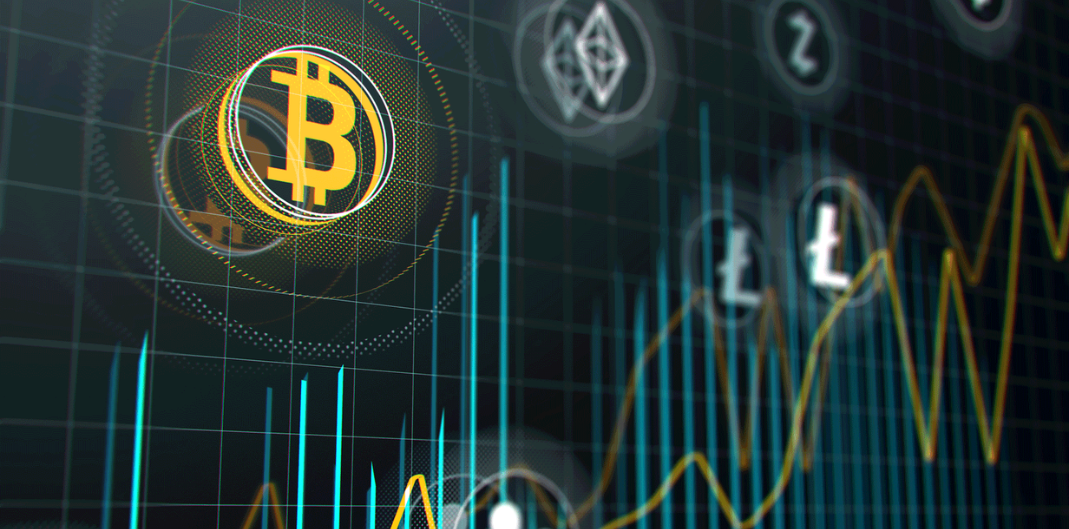- Reading time: 6 mins 15 Sec
What is Digital Asset Management?
Digital asset management in cryptocurrency involves buying, selling, and managing digital assets like Bitcoin and Ethereum.
The goal is to grow the value of these assets over time. Just like traditional asset management, which deals with stocks, bonds, and other investments, crypto asset management requires strategic planning and the use of specialised tools.
The Role of Crypto Asset Management
Crypto asset management is a comprehensive process that involves the oversight and strategic handling of digital assets such as cryptocurrencies, tokens, and other blockchain-based assets.
It is essential for individuals and institutional investors aiming to maximise the value and security of their investments in this dynamic and often volatile market.
Here are the main objectives and how they are achieved:
Diversification is a fundamental strategy in investment management, and that applies to crypto asset management as well.
Example:
- Bitcoin (BTC) and Ethereum (ETH): Investing in both Bitcoin and Ethereum can balance a portfolio since they have different use cases and market behaviors.
The primary goal for most investors is to grow their portfolio’s value over time. This is achieved through strategic buying and selling of crypto assets.
Example:
- Technical Analysis: Using charts and historical data to predict future price movements and identify buying or selling opportunities.
Rebalancing
Periodically adjusting the portfolio to maintain a desired level of asset allocation.
For example, if Bitcoin’s value increases significantly, it might make up a larger portion of the portfolio, necessitating a sell-off of some Bitcoin to rebalance and maintain diversification.
Liquidity Management
Ensuring that there is enough liquidity in the portfolio to make quick trades when necessary.
This might involve keeping a portion of the assets in highly liquid cryptocurrencies or stablecoins.
Yield Generation
Exploring opportunities to generate additional returns through methods like staking, lending, and yield farming.
For instance, investors can stake Ethereum in the ETH 2.0 network to earn rewards or lend their crypto on platforms like BlockFi and Aave to earn interest.
Risk Management
Implementing strategies to manage and mitigate risks, such as setting stop-loss orders to limit potential losses and using insurance products to protect against exchange hacks and other unforeseen events.
Tools for Crypto Asset Management
Several tools and platforms have been developed to help manage crypto assets effectively.
Here are some popular examples:
Exchanges
- Coinbase: A user-friendly platform for buying, selling, and managing cryptocurrencies.
-
Binance: Known for a wide range of cryptocurrencies and advanced trading features.
Wallets
- Ledger: A hardware wallet offering high security by storing crypto offline.
- MetaMask: A software wallet that allows easy interaction with decentralised applications (dApps) on the Ethereum blockchain.
Portfolio Management Apps
- CoinTracking: Tracks crypto trades and provides insights into portfolio performance.
- Blockfolio: A mobile app for tracking the value of crypto investments and market news.
Robo-Advisors
- Token Metrics: Uses artificial intelligence and machine learning to provide investment advice and portfolio recommendations.
- Shrimpy: Automates portfolio management and rebalancing according to user-defined strategies.
The Importance of Security in Crypto Asset Management
Given the digital nature of cryptocurrencies, security is paramount.
Here are some best practices for securing crypto assets:
Use Hardware Wallets
- Storing cryptocurrencies in hardware wallets like Ledger or Trezor provides an extra layer of security.
Enable Two-Factor Authentication (2FA)
- Adding 2FA to exchange and wallet accounts helps prevent unauthorized access.
Regular Backups
- Regularly backing up wallet keys ensures that you can recover your assets if your device is lost or damaged.
Stay Informed
- Keeping up with the latest security practices and being aware of potential scams can protect your investments.
Pros and Cons of DAM
Digital Asset Management (DAM) systems offer several advantages and disadvantages when used for investing and trading digital assets.
PROS:
|
Benefits |
|
|
Centralised Storage |
✔️DAM systems provide a centralised repository for all digital assets, making it easy to organise and access investment-related data, such as documents, reports, and transaction records.
✔️Streamlines workflow and improves efficiency, reducing the time needed to locate important information. |
|
Security and Compliance |
✔️Advanced DAM systems offer robust security features, including encryption, access controls, and audit trails.
✔️Protects sensitive investment data and ensures compliance with regulatory requirements. |
|
Improved Collaboration |
✔️DAM systems facilitate better collaboration among team members by providing tools for sharing and version control.
✔️Enhances decision-making processes and ensures that everyone is working with the most up-to-date information. |
|
Enhanced Analytics |
✔️Many DAM systems include analytics tools that can track asset performance and usage.
✔️Provides insights into investment trends and helps in making data-driven decisions. |
|
Efficiency and Productivity |
✔️Increases productivity by automating repetitive tasks and improving asset searchability.
✔️Automated workflows and metadata tagging reduce manual processes. |
CONS
|
Disadvantages |
|
|
Cost |
× High initial setup costs and ongoing maintenance expenses.
× May be a significant investment for small firms or individual traders.
|
|
Complexity |
× DAM systems can be complex to implement and require training for effective use.
× Learning curve may slow down initial adoption and usage.
|
|
Integration Challenges |
× Integrating DAM with other existing systems (e.g., trading platforms, CRM systems) can be difficult.
× May require additional resources and time to achieve seamless integration.
|
|
Dependence on Technology |
× Reliance on digital systems makes the investment process vulnerable to technical issues and outages.
× Downtime or technical failures can disrupt trading activities and access to important information.
|
|
Customisation Needs |
× Off-the-shelf DAM solutions may not meet all specific needs of an investment or trading firm.
× Customising the system to |
What Happens to Crypto Assets Held in a Coinbase Account?
When you hold crypto assets in a Coinbase account, several key processes and safeguards come into play:
Storage and Security
- Cold Storage: The majority of crypto assets held by Coinbase are stored in cold storage, which means they are kept offline to protect against hacking and theft. Cold storage includes hardware wallets and secure physical locations.
- Hot Wallets: A smaller portion of assets is kept in hot wallets for liquidity and immediate transactions. These are more vulnerable to hacking but are protected by multiple layers of security.
- Insurance: Coinbase carries insurance for the assets stored on its platform. This insurance covers losses due to cybersecurity breaches, but it may not cover losses due to individual account compromises (e.g., if a user’s account is hacked due to poor security practices).
User Responsibilities
- Account Security: Users are responsible for securing their accounts with strong passwords, two-factor authentication (2FA), and other security measures. Coinbase offers tools and guidelines to help users protect their accounts.
- Private Keys: Unlike some other platforms, Coinbase does not provide users with private keys to their wallets. Instead, it manages the private keys on behalf of users, which means users must trust Coinbase’s security measures.
Regulatory Compliance
- KYC and AML: Coinbase adheres to Know Your Customer (KYC) and Anti-Money Laundering (AML) regulations. This means users must verify their identities, and suspicious activities are monitored and reported to relevant authorities.
- Legal Jurisdictions: The services available and the regulations applicable can vary depending on the user’s location. Coinbase complies with the laws and regulations of each jurisdiction it operates in.
Transaction Handling
- Buying and Selling: Users can buy, sell, and trade cryptocurrencies on the Coinbase platform. Transactions are processed promptly, but the speed can vary depending on network congestion and other factors.
- Fees: Coinbase charges fees for transactions, which can include trading fees, withdrawal fees, and other service-related charges. These fees are clearly outlined in Coinbase’s fee schedule.
Access and Recovery
- Access to Funds: Users can access their funds at any time through the Coinbase platform, using web or mobile apps. They can transfer funds to other wallets or convert them to fiat currency.
- Account Recovery: Coinbase has procedures in place for account recovery in case of lost access credentials. This usually involves identity verification and other security checks.
Risks and Considerations
- Custodial Risk: By holding assets in Coinbase, users are entrusting their crypto to a third party. If Coinbase were to face a significant security breach or financial difficulties, users could be at risk of losing their assets.
- Market Volatility: Cryptocurrencies are known for their volatility. The value of assets held in Coinbase can fluctuate significantly, impacting the overall portfolio value.
Holding crypto assets in a Coinbase account offers convenience and security measures, but it also requires users to trust Coinbase’s management of their private keys and adhere to regulatory requirements.
Users must balance the benefits of easy access and strong security with the risks associated with third-party custody and market volatility.



